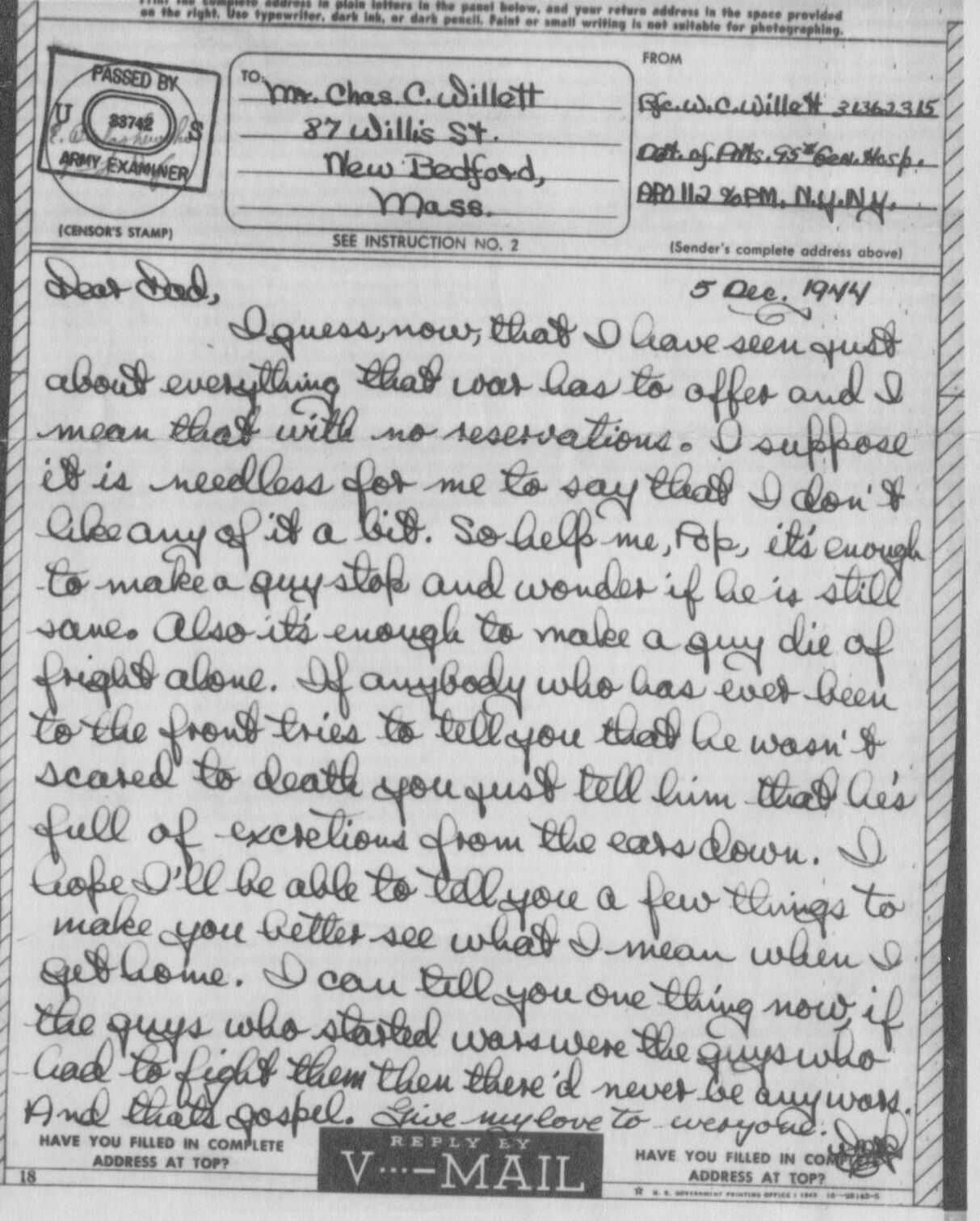My dad died ten years ago. Here’s a letter he wrote to Paul Fussell, author of The Boys’ Crusade (I had given him this book with great trepidation because Dad didn’t talk about the war–combat vets don’t–but I knew that this book was about his group. I’m so glad I gave it to him.) Anyway…
“Dear Mr. Fussell:
“I am one of those “boy survivors, now around eighty.” When I first read “The Boys’ Crusade” I felt that I wanted to write to you. Now that I have completed the second reading I feel compelled to do so.
“…I did my ASTP stint at Providence College and then later joined the 26th (Yankee) Division on maneuvers in Tennessee. You know the rest of that story but there are a couple of things that I wanted to add. I wound up in the Second Squad of the First Platoon of Company “K” in the 328th Infantry Regiment, 26th Division, attached ultimately to Patton’s Third Army. When you itemized those items carried into combat by most infantrymen, there was an anomaly in our outfit of which you apparently were not aware. When it was announced that we were being committed to combat in some unknown place, we were ordered to line up with our raincoats and overshoes in hand and then told to throw the raincoats in one pile and the overshoes in the other pile. The rationale, we were told, is that we would not need these in combat. Well, we did go into combat and it rained, and it got cold, and colder, and it snowed, and the water in our slit trenches often froze over at night, and we were pinned down cold, wet, and miserable, scared to death, and for six weeks we did not change our clothes. At the end of that time, those that did not get killed or evacuated with wounds for the most part had severe trenchfoot and I was one of those. [The casualty rate for this group was over 50%.] Through tender care and patience, and a lot of luck, I did not require any amputations but I have been in trenchfoot centers crowded with kids my age with toes amputated and legs amputated to the upper thigh and always bilaterally. Would we have been better off with overshoes and raincoats? Those in command didn’t think so. [Note: I know, because Dad told me, that it turns out that trenchfoot can be avoided if you just take off your boots every night and massage your feet and legs, but the soldiers were never taught that. They were taught about brushing their teeth and avoiding VD, but not trenchfoot.]
“After being discharged, I attended Brown University to get my deferred education. While there I met and become very close to a professor of mathematics called Ray Gilman and when I read “An Operation Called Cobra” I recalled a conversation that I had with him. I had mentioned that I had driven through the rubble called St. Lo may times while on temporary duty on Patton’s Red Ball Express. He told me that he was involved with that in a way. He said that when Cobra was under consideration, the Allies realized that there would be many “friendly fire” casualties and, as a mathematician, he was called on to calculate the degree of those casualties given the terrain, the position of all troops, and the planned bombing patterns. He did so and came up with a number that, as I recall, was somewhat under three percent. On the basis of that estimate (and other things!!), Operation Cobra was carried out with the results that you so graphically described.
“Finally, before I read your book, there were certain bits of information about the war that I thought were known only by me. Thank you for erasing that burden from my mind. I am very grateful.
“Most sincerely,
“Ward C. Willett.”
And here is one of his V-Mails from France–I found it in a box full of photos and papers when I was cleaning up and organizing after his death. He was very young.

